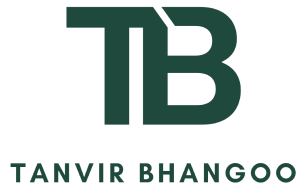Here’s the framework I use with CEOs and Boards to accelerate time to revenue:
1. Face Your Reality
Take an objective snapshot of your business:
- Review your P/L, growth trends, churn, and R&D investments.
- Drill into unit economics: gross margin, COGS, and year-over-year changes.
- Understand the underlying factors driving your current state (e.g., flawed models vs. scale issues).
- If your margin is below let’s say 75%, is it because of the market, or because you’ve been buying deals while you build your product – get super clear on the underlying factors.
- Identify capability gaps in your product and team.
Execution Edge Tip: Separate symptoms from root causes. For example, if your margins are below 50% and you heavily discount your core product, is it because the product is subpar, you’re in the wrong business, or because your team can’t sell?
2. Evaluate Opportunities
Deeply understand your market:
- Go deep into understanding your market. How much TAM can you win at the current rate? What are the largest accounts, what is a typical buying cycle, and what can you realistically win based on data?
- Identify what it takes to achieve 2x or 3x growth. Where will this growth come from – expanding current customers or new wins?
- Determine whether to expand into new verticals or double down on existing ones.
- What does total opportunity look like in the next 3 years, and how much investment would you need?
Execution Edge Tip: Nothing replaces direct customer or prospect conversations.
3. Pick the Direction
Define your best, base, and worst-case scenarios:
- How can you align your business to market opportunities or fight the headwinds?
- Build a directional model to forecast P/L impacts.
- Factor in different scenarios such as win rates, M/A opportunities, and incremental investments in product, marketing, and people.
- Decide on investments needed, and different growth models such as product-led, sales-led, or combination.
Execution Edge Tip: Focus on the right direction rather than precise numbers. What will you say no to? You can adjust your Excel model, but reversing direction mid-year is tough
4. Assess Your Execution Capability
Ensure you can execute your chosen direction:
- Do you have the funding, and what tradeoffs would you need to make (what would you give up)?
- Do you have the right teams, and what would it take to build the right capabilities
- Are you set up structurally from a people, process, and systems perspective to achieve these goals?
- Can you move as fast as you’d like in building your product, hiring new teams, etc. and how long of a ramp should you consider?
- Do you have alignment from the board to cross-functional teams?
Here is a framework I use with my executives when identifying where we need to focus our efforts to unblock execution. It’s called the Execution Capability Matrix. As you prepare to sequence your efforts, think critically about whether you have strong alignment across teams and the right talent for your goals.

Execution Edge Tip: If you have more than 5 key priorities (I believe 3 is a good number), you’re not aligned as a company
- Sequence Your Plan
Prioritize and sequence initiatives to maximize ROI:
- Identify core levers directly tied to your strategic goals. This should be directly aligned to steps 3 and 4 above. Think of these as your core initiatives for the year.
- Example
- If you’ve decided to spend the year reducing churn, then pick a few priorities directly aligned with fixing your product and customer success functions, and when to invest
- If you decide that growth will come from going deeper in your current market, then pick a few core initiatives such as increasing win rate, increasing product attach, and perhaps efficient onboarding.
- Build an annual plan with clear milestones.
- Set up monthly and quarterly check-ins to ensure alignment.
Execution Edge Tip: Quantify expected results but allow room for learning and adjustment, especially with new initiatives.
Achieving your 2025 plans requires more than just hard work; it demands disciplined execution. By focusing on the foundational 20% of work, you can unlock 80% of the impact and gain the competitive edge needed for success.

 Accelerating Time to Revenue in 2025 (Part 3): A 5-Step Strategy Execution Framework
Accelerating Time to Revenue in 2025 (Part 3): A 5-Step Strategy Execution Framework